Meet the golf course manager: Lucy Sellick
Related Articles
From Wenvoe Castle Golf Club in Wales, Lucy talks about maintenance during lockdowns, a mammoth irrigation renovation project and being in possibly the only golf club greenkeeping team in the UK that includes a husband and wife as full-time members.
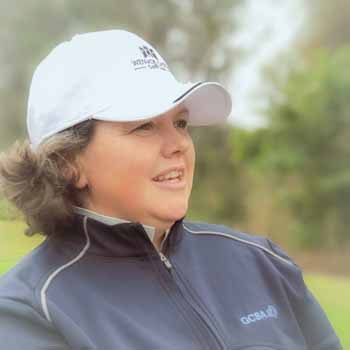
Founded in 1936 around Wenvoe Castle, a mansion that was the home of Hugh Jenner, the club’s first president, the 18-hole golf course south of Cardiff was designed by James Braid.
The course opens with a par five hole with a tee-off from an elevated tee to an undulating fairway, leaving two shots to make the guarded green. The front nine can be quite hilly and there are a few tough examinations in place while the inward nine is flatter and finishes with a dogleg par four.
Here, we speak with the club’s course manager, Lucy Sellick – the first female head greenkeeper in Wales – about maintaining a venue that’s now hosted numerous championships.
Hi Lucy, can you tell us a bit about your background and how you ended up as the course manager at Wenvoe Castle Golf Club?
It all started back in 1990 when a neighbour asked if I would help with the construction of a new course. I was still attending school and planning on joining the navy, but it didn’t take long for my love of greenkeeping to develop. I did all my studying at Pencoed College through to level 4 before moving to Celtic Manor. It was there that I gained my spray certificates and my qualification in conservation and environmental management which I self-funded. My next move was to Saltford Golf Club. As a deputy, part of my role was setting up the health and safety, and monitoring, training programmes and machinery maintenance schedules. I joined Wenvoe Castle back in May 2018.

What is the current size of your team, do you all cross-fertilise to meet the daily needs of the workload and how do shift patterns work with regards summer and winter?
Including myself we have a team of four full times and two seasonal staff that run from March to October. They are:
Steve Webb – he has been at the club over 40 years and is a valued member of staff who knows every inch of the site.
Keiron Cook – new to greenkeeping, he joined the team last winter but already has a passion for the industry, asking questions and wanting to learn new things.
Lee Sellick – you may have spotted the name, yes it is my husband and everybody asks what’s it like working together. The truth is it’s no different than anyone else. We worked together at Celtic Manor for a number of years so don’t find it strange. Its great to have a partner that understands and supports what you do.
Our seasonal staff are:
Ty Garland – an old head greenkeeper from the club, he is in his 70s but still comes in twice a week to cut fairways or rough, he is a huge help.
Ethan Mullen – the youngest on our team and still in his teens, this is his second season with us.
We work six people at 35 hours per week and six at 45 hours per week. This works well but is maybe a struggle during October with cutting and leaves to chase but after a long summer that’s needed. Weekends are covered by the full-time staff one day on and one day off. We have two in to allow a full cut and rake, and markers moved. For opens and tournaments, we start at 4am and carry out a complete sweep of the course and then a breakfast treat as a thank you, and are all home usually around 10am.
Tasks are shared as much as they can be, but they all excel in different areas so when we are pushed, I have my go to one man to get a specific job done if needs be. I have the responsibility of spraying but will use a local contractor for some applications – it is cost effective and saves time.
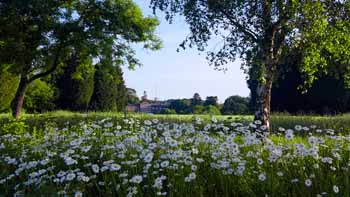
What are the biggest challenges you face in maintaining the course, what additional challenges have you faced throughout the Covid pandemic lockdown and how have you and the team adapted to these?
The weather. We are having huge extremes, we’re constantly hearing a record has been broken either in rainfall or the hottest day, we do not seem to have had any deep frost for a long time.
With Covid-19 it is the unknown – we take each day as it comes. Wales has had different restrictions than England, the first lockdown we were down to two and struggled to maintain the course and keep on top of hand watering; surfaces suffered as a result. The second, I managed to keep all the staff and get a head start on winter projects.
We just need to look out for each other, take all the precautions we can and hope golf clubs survive this awful time.
One positive is that golf has had the resurgence it needed but for us greenkeepers it’s full diaries, extra wear and tear on the course and the likelihood of reduced budgets because of the unknown.
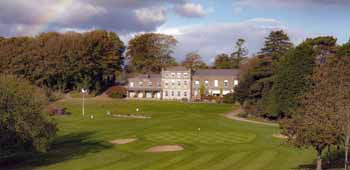
How many bunkers does the course currently have, what daily maintenance programme do you run for these, are there any plans to undertake renovations?
The club has 41 bunkers, these get a full rake Mondays, Wednesdays and Fridays (dependent on weather and play), and are footprinted the remaining days, this is mostly for animal prints and rabbit scrapes. They get a full rake on weekends during the summer. As for renovation, we have started a programme of removing the old sand, rebuilding any faces that need work with turf revetting and adding new sand. We carried out six in the spring and are trialling a new sand in these to see how they drain and their play qualities.
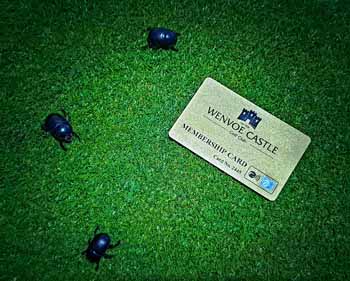
What seed cultivars do you currently use across the course and are you looking to trial any additional new products?
Greens – I still have stock of the Johnsons J All Bent Arrowtown and Manor.
Tees – I use the Johnsons J Tee. I find we have a higher hit rate and better recovery during autumn with the tetraploid rye grasses Fabian and Double; the tees don’t have irrigation and with the increase in rounds due to Covid-19, this mix keeps up.
I’m looking at giving the Tee2Green Crystal Bluelinks a try next season – an increase in temperature and excessive heat stresses to the plant needs a good resistance to dollar spot which we are starting to see more of in the UK, so this would be beneficial to my greens.
The greens get overseeded with the autumn renovations and we add when needed to weak areas and divot any scars we get.
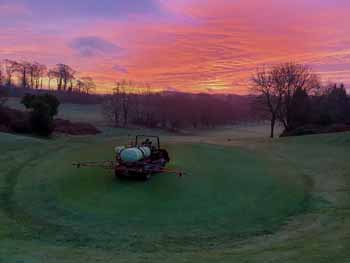
Wenvoe produced a priority report to assess the tees. What was identified as being the problems, what action and work is required and when will this be undertaken?
It was the first thing I noticed when joining the club and the biggest complaint from members and visitors. This is made worse by the lack of irrigation in the tees.
I have a spreadsheet with a simple traffic light system showing the total area of tee ground the problems, such as uneven, collapsing sides, hot, size and shade. Solutions include, for example, level, rebuild, tree removal or mixing organic matter into the rootzone that struggles to hold moisture in the summer.
I have a cost per metre squared to each of these remedies and with the traffic light system can work out what tees and how many we can do each winter.
The tees are applied with a granular wetting agent and ICL Renovator pro at the start of the season and an application of controlled release fertiliser mid-August to strengthen the plant going into autumn and winter.
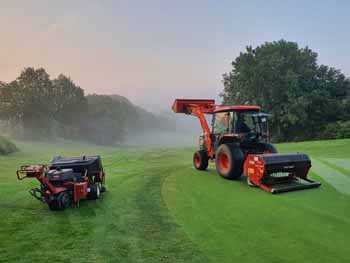
Path renovation is on the agenda. What areas will you be addressing, what solutions are you looking at and when do you expect the work to commence?
The club wanted access to golf for all for 12 months of the year. Our front nine holes are on rock, so we discussed trying to establish a route on these first. We investigated a few options considering how much prep was required beforehand, time scale and cost, and any further maintenance. An order was placed with Whitemoss Eco Supplies for the GrassTrak14. Prep work required us to cut the grass down to 20mm and the 2x20m rolls to be laid and pegged down over the cut area then wait for the grass to grow through. Installation started at the end of November and took two days; the club will continue to add until it reaches its goal of a complete loop.
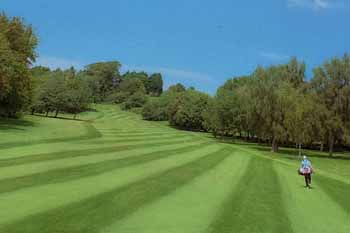
You’re starting to look at soil biology as a means to support plant health and fight against disease. What have been your reasons for doing this, what have you learnt, which products are you using and what results have you seen?
Good soil biology is critical for a number of reasons – increase the soil’s biodiversity and structure, aid nutrient cycling and retention and the suppression of disease. The removal of contact fungicides in recent years has made our lives difficult – we can no longer just head to the chemical safe and grab a bottle.
I simplify it to members by comparing it to ourselves; healthy living taking a vitamin instead of an expensive antibiotic, add some cardio, we all know it’s good for us same with the soil – cultural practises of tining, slitting anything that gets air into the green will favour these beneficial organisms.
My reasoning is to reduce the cost financially for the club and the lasting impact on the environment. I am working with Symbio and slowly reducing my fertiliser and chemical use and replacing them with beneficial bacteria and bio stimulants.
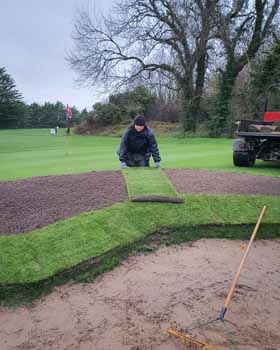
What aeration / renovation programmes do you run, how do you determine what the course needs and when, and what are you preferred methods and what results do you experience?
I benchmarked the greens on my arrival at the club and took regular readings. I also like to cut the greens on a Monday and Friday to see any change that may have taken place that week.
With all the best intentions, I aim for a Sarrel roll weekly followed by a cut with the out-front brush down, so members do not even know it has been done. And a monthly Verti-drain with 10mm at various depths or the ProCore 8mm to 50mm depth. If pushed for time or fixtures we send the Verti-drain to do nine holes while the ProCore does the other and we can have all greens done prior to play, then alternate greens the following month. This is dependent on fixtures and the weather.
We use the verti-cuts and top-dress prior to any big competitions and the ultra-groomers when we have excessive seed heads.
Spring renovation is 5/8 hollow core tines to 75mm. I apply a granular about seven days prior to this and an application of calcium if soil analysis shows it-s needed and then top-dress.
Autumn I go with solid tines 16mm to a depth of 400mm with heave to relieve compaction followed by the ProCore and then scarify and apply seed. Top-dress after and a granular feed to aid recovery.
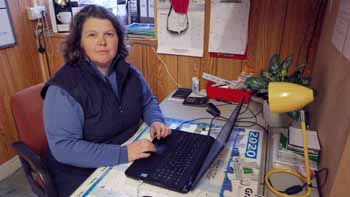
You inherited a 44-year-old irrigation system, what problems did that present to you and the team, what wheels have you now set in motion to overcome these and what exactly will be happening to ensure life becomes easier moving forward?
At first glance of the pumps I described them as a beautiful beast, but they soon became my biggest concern. The signal cable had also corroded and been damaged by the installation of drains. So, I did not have an automated system. I started watering the greens manually. A staff member would turn them on and rake the bunkers whilst waiting, then switch them off before moving to the next hole. Hand watering was also required.
The second summer I went to hand watering instead, spending up to 45-man hours per week.
It was time to put a plan in place. I got Irritech in to do an audit, this helped me get the proposal through committee. With the help from Wes at Hunter and Chris from Driptec Irrigation, we found solutions to the problems we had.
Safety – we ensured the safe operation of the old system with staff training the writing of a risk assessment, relocating the controls so the operator was no longer stood next to the pumps when switching them on, and had the system earthed.
Phase 1 – replace all the sprinklers and install the Bluetooth nodes.
Phase 2 – replace the water tank with a greater capacity for any future upgrades.
Phase 3 – new pumps and the pump house.
Phase 4 – pipe and control cable front nine.
Phase 5 – pipe and control cable back nine.
With a wish of extending out to aprons and at least a hose point to each set of tees.
Phase 1 should have been completed in March but due to Covid-19 we did not have the manpower, and the supply of the sprinkler was disturbed. These will be in place before March 2021.
Phase 2 has been completed, we now have double the capacity of our old tank.
Phase 3 has been completed – new pumps have been installed allowing for any future upgrades to the system.
I still have the problem of a 44-year-old PVC pipe to address and will spend a bit of time repairing leaks, but it will be a huge help that I have an automated system with constant coverage. A big thank you to the club and all those involved.
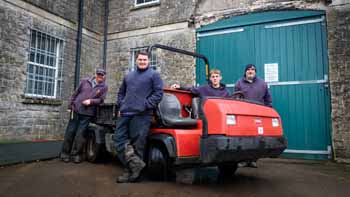
What height of cut do you use across the course?
Greens: In summer between 2.75 and 3.5mm, winter 4-5mm. Wenvoe has a reputation for quick greens.
Tees and aprons: Summer 11 to 13mm, winter 13 to 15mm. Summer heights fluctuate between 11 and 13 to help reduce stress through the lack of irrigation.
Fairways: Summer 15mm, no irrigation and rock close to the surface on the front holes makes them dry out quickly during summer and any lower we risk damaging units. Winter, 17mm,
Semi rough: 23mm and rough 50mm. The tree bases are sprayed off and any areas that require constant strimming will have a PGR applied.
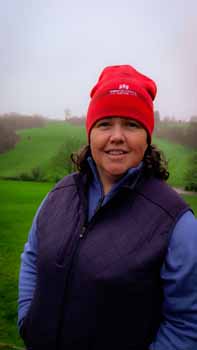
What do you think are the strengths that have carried you through your career and what vision do you have to keep the course evolving and deliver member satisfaction?
Love of the industry; getting up each day with a smile, happy to be going to the course. Working hard having to prove to others that I am capable of this career and setting an example to other clubs looking to employ women in positions of leadership. For the course, its continued improvements finding the solutions to problems that may arise, improving surface and member / visitor experience.
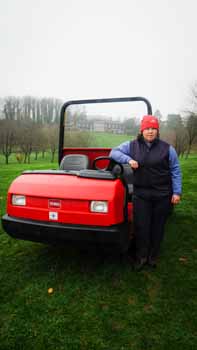
Drainage presents challenges to many course managers. Does the course suffer?
The club had invested in a drainage project just before I joined. Three holes on the back nine had drainage installed. The site is pretty good, the front nine sits on rock so just a few wet holes on the back. I have bought an Earthquake to assist with this and use it on fairways and on and off to greens. I would like to top-dress these area with sand if the budget allows in the future.
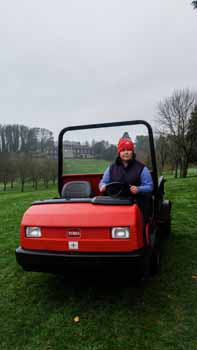
What machinery fleet are you currently using and is there a particular piece that you prefer and why?
The majority of our fleet is Toro except for a tractor and greens’ mowers. The club has invested heavily on machinery recently, we now have a new 5010H, HDX and a John Deere 2500b with the two old 3250s being converted for use on the tees and aprons. I went through all our old machinery, selling everything that was no longer any use to us. The money raised was used to buy a second-hand VW Caddy that we use for fuel runs and collection of turf or parts.
I believe the ProCore was a game changer in greenkeeping with almost all saying best bit of kit in our fleet but I have a sweet spot for the JD 2500b – years of use, great quality of cut, love the off centre units for reducing clean up stress and only needed to carry a cable on the spares’ shelf.
The course has a significant number of trees. What tree management programme is in place and what are the challenges the woodland currently presents to the wellbeing of the course and how are you addressing this?
Currently nothing is in place but it is on my to-do list, we have several woods within and surrounding the site. Natural succession changes these communities of vegetation naturally with a good mix of mosses, annual and perennial herbs and shrubs. We have started removing self-seeded trees and bramble from the woodland edges to stop encroachment into play areas.
There is higher disease pressure on the greens that have a woodland to the south side of them. We will look to reduce the canopy where possible and increase airflow.
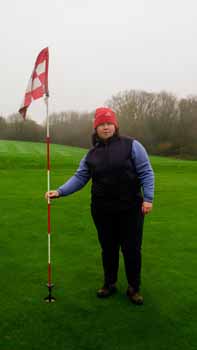
You were the first female head greenkeeper in Wales. Looking back, how do you feel about that achievement, what do you enjoy most about your role, how has the career rewarded you and what advice would you specifically give to young women who may be interested in looking at a career in greenkeeping?
I had mixed emotions. I was over the moon that I had finally smashed the glass ceiling but upset that it had taken so long for my skills, qualifications and ability to finally be recognised by a club.
This industry has given me some good friends and amazing experiences, it is a huge turf family all looking out for each other.
My advice would be to give it a try. Clubs are screaming out for volunteers or seasonal help, this is the start. If you enjoy it, look at it becoming your career, there are lots of contacts including myself for help, don’t be put off, it’s too good to be missing out.
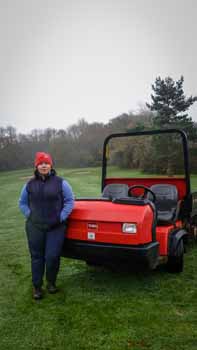
The pressures on the course manager to deliver a better product are growing year on year and the level of professionalism is rising with this. What do you think are the qualities now needed to meet the requirements and demands of golfers by someone in your position and how does this help contribute to the business of golf?
Managing expectations is vital and giving golfers the information they need to understand our role and how much of it is out of our hands. We need to be approachable and likable, we need members, managers and committees to believe in us and come on board with the improvements and practices that we would like to carry out and give them the information and the evidence why these should be done. Don’t be frightened of feedback, ask what the members would like to improve. What we believe to be our priority might not be theirs.
What is your greatest satisfaction when you are moving around the course viewing what you and the team have accomplished and what do you feel are your biggest achievements to date?
All greenkeepers have so much pride in their work, they are full of passion for the industry and have such perseverance and patience for achieving what is needed.
I feel my biggest achievement is continually making improvements to myself, staff, the working environment, course conditions and playing surfaces. For the club, an increase in membership and visitor numbers, raising the profile and a positive guest experience. Upgrading the irrigation system to a new usable automatic system again with a cost to the club that they could manage comes a close second.
What are the most memorable things you have been taught in your career and by whom, and with your years of experience, what advice would you give to youngsters starting out?
I believe my work ethic has come not just from my career but from family values, especially my mum who brought us up by herself and taught me that life’s not handed to you, you have to work for it, being diligent in everything you do and the importance of helping others.
Celtic Manor and Jim played a big part in my career with their high standards and attention to detail, ensuring guests received a superior golfing experience. I would recommend all the young greenkeepers to work at a resort / tournament course, the experiences you gain are so valuable. My advice would be to fill your CV with what you have done not, just what you have got in the way of qualifications.
What changes do you think need to be made to benefit the industry sector and profession of the greenkeeper?
This has been discussed so many times, but it needs to be communicated to general manages and management committees for change to happen. If we want to improve retention, we need to address the reasons people leave their jobs.
- Career development – are staff given access to education?
- Unprofessionalism – lack of support, poor treatment, inadequate workplaces and equipment and respect of the green staff.
- Management behaviour – negative behaviours towards staff and restricting staff members to carry out their role.
- Work / life balance – overworking seems to be worn as badge of honour in our industry, but we should address the shortfall in resources.

























